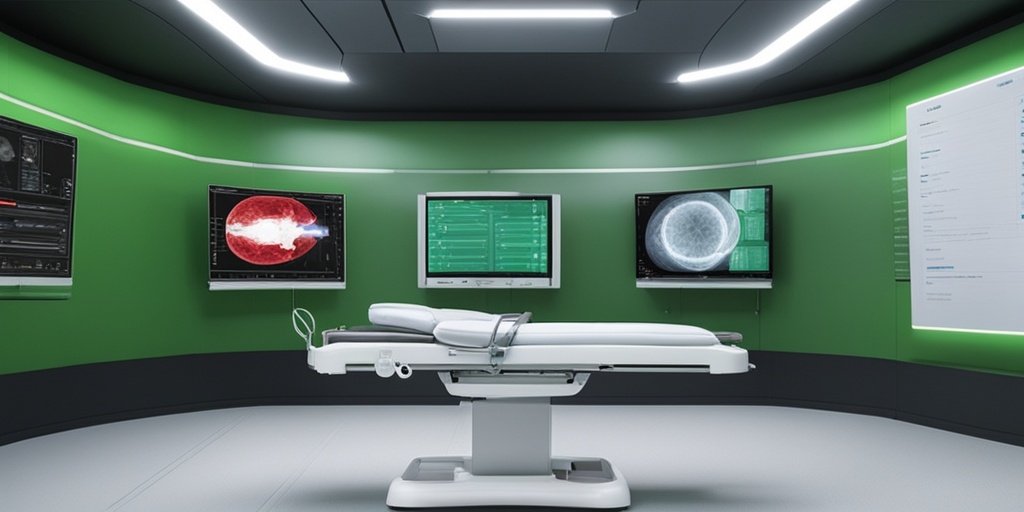⚡ Quick Summary
The ShockMatrix pilot study explored a machine-learning enhanced decision support tool to predict the Need for Hemorrhage Resuscitation (NHR) in trauma patients. The study demonstrated a comparable performance to clinical reference scores, indicating a promising advancement in trauma care decision-making. 🚑
🔍 Key Details
- 📊 Dataset: 36,325 eligible patients, 28,614 included in model development
- 🧩 Features used: Nine prehospital variables
- ⚙️ Technology: XGBoost model
- 🏆 Performance: F4-score of 0.76 [0.73-0.78]
- 📱 Application: Customized smartphone app for real-time data collection
🔑 Key Takeaways
- 🚑 Trauma decision-making can be enhanced through machine learning.
- 💡 The ShockMatrix tool predicts NHR effectively using prehospital data.
- 📈 High clinician satisfaction was reported during the study.
- 🔄 No workflow disruption was observed during the implementation.
- 📅 Study duration: Data collected from Nov 2010 to May 2022.
- 🌍 Conducted at: Four level-1 trauma centers.
- 🆔 Clinical relevance: Comparable performance to existing clinical reference scores.

📚 Background
Decision-making in trauma care is often complex and can lead to deviations from established guidelines. The introduction of machine learning (ML) into clinical settings offers a potential solution to enhance decision support, particularly in predicting the need for hemorrhage resuscitation. This study aims to bridge the gap between clinical judgment and data-driven predictions, ultimately improving patient outcomes.
🗒️ Study
The ShockMatrix pilot study was designed in two parts. The first part focused on developing a machine learning model using a comprehensive registry of trauma patients to predict the Need for Hemorrhage Resuscitation (NHR). The second part tested the feasibility of collecting predictor variables in real-time through a customized smartphone application during prealert scenarios in trauma centers.
📈 Results
The study included a total of 28,614 patients, with 11% meeting the criteria for NHR. The XGBoost model, utilizing nine prehospital variables, achieved a strong predictive performance with an F4-score of 0.76. In the second part of the study, clinician predictions were found to be comparable to the model’s predictions, with no significant workflow disruptions reported.
🌍 Impact and Implications
The findings from the ShockMatrix pilot study highlight the potential of machine learning to transform trauma care. By providing a reliable tool for predicting hemorrhage resuscitation needs, healthcare professionals can make more informed decisions, ultimately leading to improved patient outcomes. This study paves the way for further integration of technology in clinical settings, enhancing the overall quality of trauma care.
🔮 Conclusion
The ShockMatrix pilot study represents a significant step forward in the use of machine learning for trauma decision-making. The development of a simple, effective prediction tool for NHR demonstrates the potential for technology to enhance clinical practice. As we continue to explore the integration of AI in healthcare, the future looks promising for improving patient care in trauma settings. 🌟
💬 Your comments
What are your thoughts on the integration of machine learning in trauma care? We would love to hear your insights! 💬 Leave your comments below or connect with us on social media:
Pilot deployment of a machine-learning enhanced prediction of need for hemorrhage resuscitation after trauma – the ShockMatrix pilot study.
Abstract
IMPORTANCE: Decision-making in trauma patients remains challenging and often results in deviation from guidelines. Machine-Learning (ML) enhanced decision-support could improve hemorrhage resuscitation.
AIM: To develop a ML enhanced decision support tool to predict Need for Hemorrhage Resuscitation (NHR) (part I) and test the collection of the predictor variables in real time in a smartphone app (part II).
DESIGN, SETTING, AND PARTICIPANTS: Development of a ML model from a registry to predict NHR relying exclusively on prehospital predictors. Several models and imputation techniques were tested. Assess the feasibility to collect the predictors of the model in a customized smartphone app during prealert and generate a prediction in four level-1 trauma centers to compare the predictions to the gestalt of the trauma leader.
MAIN OUTCOMES AND MEASURES: Part 1: Model output was NHR defined by 1) at least one RBC transfusion in resuscitation, 2) transfusion ≥ 4 RBC within 6 h, 3) any hemorrhage control procedure within 6 h or 4) death from hemorrhage within 24 h. The performance metric was the F4-score and compared to reference scores (RED FLAG, ABC). In part 2, the model and clinician prediction were compared with Likelihood Ratios (LR).
RESULTS: From 36,325 eligible patients in the registry (Nov 2010-May 2022), 28,614 were included in the model development (Part 1). Median age was 36 [25-52], median ISS 13 [5-22], 3249/28614 (11%) corresponded to the definition of NHR. A XGBoost model with nine prehospital variables generated the best predictive performance for NHR according to the F4-score with a score of 0.76 [0.73-0.78]. Over a 3-month period (Aug-Oct 2022), 139 of 391 eligible patients were included in part II (38.5%), 22/139 with NHR. Clinician satisfaction was high, no workflow disruption observed and LRs comparable between the model and the clinicians.
CONCLUSIONS AND RELEVANCE: The ShockMatrix pilot study developed a simple ML-enhanced NHR prediction tool demonstrating a comparable performance to clinical reference scores and clinicians. Collecting the predictor variables in real-time on prealert was feasible and caused no workflow disruption.
Author: [‘Gauss T’, ‘Moyer JD’, ‘Colas C’, ‘Pichon M’, ‘Delhaye N’, ‘Werner M’, ‘Ramonda V’, ‘Sempe T’, ‘Medjkoune S’, ‘Josse J’, ‘James A’, ‘Harrois A’, ‘Traumabase Group’]
Journal: BMC Med Inform Decis Mak
Citation: Gauss T, et al. Pilot deployment of a machine-learning enhanced prediction of need for hemorrhage resuscitation after trauma – the ShockMatrix pilot study. Pilot deployment of a machine-learning enhanced prediction of need for hemorrhage resuscitation after trauma – the ShockMatrix pilot study. 2024; 24:315. doi: 10.1186/s12911-024-02723-9